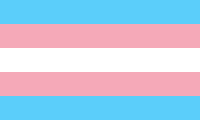
Photo from wikipedia
Increasing numbers of trans and gender diverse young people are presenting to health services seeking gender-affirming medical care. While testosterone therapy in transgender males is generally effective in inducing masculinization,… Click to show full abstract
Increasing numbers of trans and gender diverse young people are presenting to health services seeking gender-affirming medical care. While testosterone therapy in transgender males is generally effective in inducing masculinization, some adolescents encounter barriers to accessing such treatment or may not wish to experience all the changes that usually accompany testosterone. Here, we describe the case of a 17 year old trans male who presented with gender dysphoria but was initially unable to start testosterone therapy. Due to a desire for facial hair, he was therefore treated with topical minoxidil, an easily accessible, over-the-counter medication that has been used to treat androgenic alopecia for several decades. In this case, minoxidil was applied regularly to the lower face and, after three months of treatment, he developed obvious pigmented facial hair that was sufficient to help him avoid being misgendered. The only reported side effect was excessive skin dryness. Unexpectedly, despite no direct application to other areas, there was also an increase in pigmented body hair, suggestive of systemic absorption and effect. Given its long-standing use and safety record in the management of alopecia, minoxidil might thus represent a useful treatment option for trans males who desire an increase in facial hair.
Journal Title: Frontiers in Endocrinology
Year Published: 2021
Link to full text (if available)
Share on Social Media: Sign Up to like & get
recommendations!